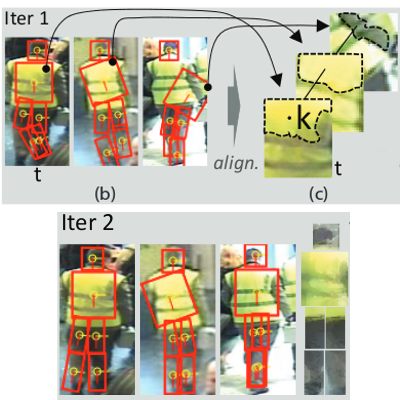There exist many publicly available dataset, such as:
VIPeR,
ETHZ and iLIDS. However, none of them mirror a real re-identification scenario. Even thought VIPeR is one the most promising and challenging dataset in this field, it contains only a image for each individuals. Nowadays we have powerful tools for person tracking, so we can accumulate images over time to make easier the problem. So, we need a dataset that contains multiple images for each person. iLIDS and ETHZ seems to deal with this problem, however they contain images not captured from different cameras and also the intra-person images do not vary a lot in terms of resolution, light, pose, and so on.
Among this dataset, the only one that contains this requirements is CAVIAR4REID: 1) it has broad changes in resolution, the minimum and maximum size of the images is 17 X 39 and 72 X 144, respectively. 2) Unlike ETHZ and iLIDS, it is extracted from a real scenario where re-identification is necessary due to the presence of multiple cameras and 3) pose variations are severe. 4) Unlike VIPeR, it contains more than one image for each view. 5) It contains the union of all the images variations of the other datasets.
Technical info
The zip contains the dataset as a set of images. For each person we have a set of 5 or 10 images. The filename identifies which images are associated to each person:
XXXXYYY.jpg
XXXX = identifier of the person
YYY = identifier of the image for that specific person
E.g.: 0003005.jpg is the 5th image of the 3rd person


